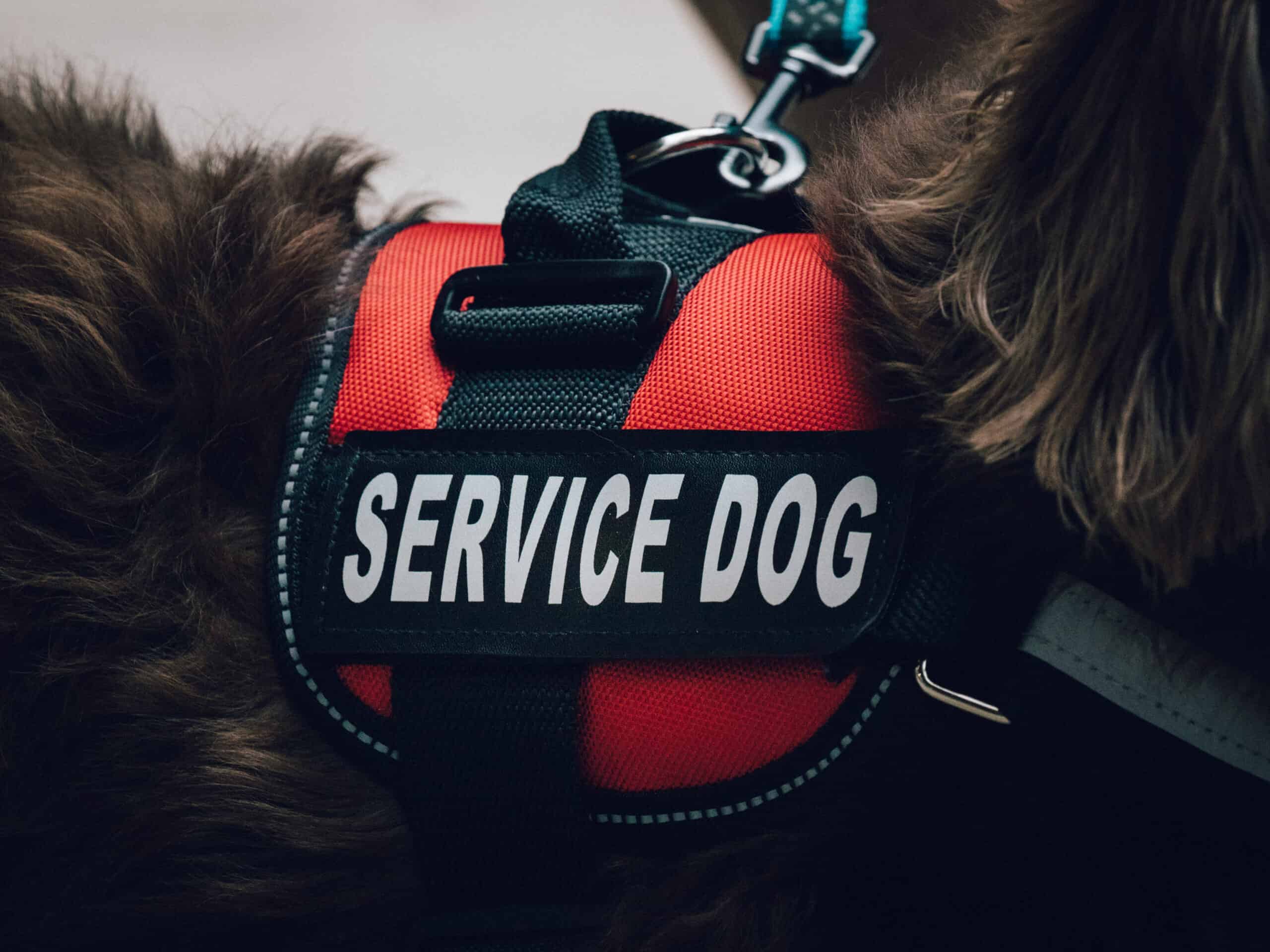There are a variety of ways we have found to utilize dogs in everyday life to perform duties that they were not originally intended for. From acting as faithful companions as pet dogs, to providing support to law enforcement in working disciplines, there is a reason that dogs have evolved and earned the moniker of “man’s best friend.”
Dogs can also be trained to help provide support and comfort in other ways, too. Service dogs are individually trained to perform specific tasks to help individuals with disabilities, from seeing-eye dogs to mobility assistance dogs. Dogs can also be trained as therapy dogs or Emotional Support Animals (ESAs), which provide assistance but have different roles from that of a service dog.
In each of their own ways, service dogs, therapy dogs and emotional support animals can improve the quality of life for those around them. However, from a legal standpoint, there are certain protections that are afforded to service dogs that are not granted to therapy dogs or ESAs. In recent years, this has resulted in a spate of incidents where owners have tried to bring ESAs into public places where dogs are not permitted, only to be turned away as they are clearly not task-trained service animals. This distinction is important to understand as a failure to understand the regulations can undermine the rights that are granted to service dog owners.
In this article, we will provide an overview of service dogs, therapy dogs and emotional support animals, and then outline the differences and rights that are granted under federal law in the United States.
Service Dogs
A service dog is a dog that has been individually trained to perform certain tasks that help a person with a disability or disabilities. The task must be directly related to the person’s disability and the dog must take specific action when needed for the handler. Service dogs are protected under the Americans with Disabilities Act (ADA), which affords service dogs the right to enter public places with their handler. Additional rights are granted under the Federal Housing Amendment Act and the Air Carrier Access Act.
Due to the fact that service animals have access rights and are permitted to enter public places like restaurants, hotels and grocery stores, they must behave in a controlled manner. The service animal must also be housebroken. With that said, establishment owners can only ask if “the dog is a service dog for a disability,” and “what tasks has the service dog been trained to perform.” A business or person, cannot ask about the person’s disability, require medical documentation, special identification, or training documentation. They also cannot ask the service dog to demonstrate its ability to perform the work or task.
Service dog task examples
There are a number of tasks that a service dog can be trained to perform. The nature of the task(s) will depend on the individual’s disability or disabilities, and how they can be best utilized to help their handler. Examples of these tasks could include:
- A seizure response service dog can be trained to alert family members to the onset of a seizure for their handler.
- An autism assistance dog for a child can be trained to perform an ‘emergency down’ and drop to the ground if the child starts to bolt/run away.
- A mobility service dog can be trained to turn on lightswitches or retrieve items from another part of the house if their handler struggles with movement.
- A psychiatric service dog can be trained to perform tactile stimulation for a handler who may suffer from nightmares.
These are just a few examples. The important thing to note is that the task that is trained must be linked to the handler’s disability.
Service dog misconceptions
Unfortunately, there are lots of misconceptions that have been perpetuated in recent years regarding service dogs. Many of these misconceptions are rooted in real-life experiences or situations that are then given greater prominence when they are posted on social media networks.
Perhaps the most common misconception surrounds identification tags and vests. Service dogs do not need to wear a vest or ID tag to prove that they are a service dog. Handlers also do not need to have any sort of certification or identification for their service dog. These are not required under the ADA and are not real. There are, sadly, many unscrupulous companies who try to cash in on those with disabilities by insisting that these items are all necessary – they are not. Many business owners and citizens also believe these are requirements, attempt to require them, make signage to deter other dog owners and open themselves up to legal action under the ADA by making them a requirement to enter.
Additionally, it should be noted that a service dog can be any type of breed. It should be appropriate for its trained work, so for a stability service dog, the dog will need to be of a sufficient size to balance the handler’s weight. However, the dog does not need to be purebred or a specific type of breed, any dog can be trained as a service dog.
A service dog does not need to be purchased from, or trained by a professional trainer. Self-trained service dogs must abide by the same regulations as any other service dog, but this does not prevent many service dog owners from training their own dogs to perform the tasks they require help with.
Therapy Dogs
Therapy dogs are trained to provide support and assistance, but they are not trained to perform specific tasks. This is one key difference between service animals and therapy dogs, and it is the reason why therapy dogs are not protected under the ADA. They typically accompany their handler to a variety of settings to provide comfort to other people with the permission of the establishment.
Examples of situations where therapy dogs may be used include:
- Visiting a retirement home to provide interaction and joy to elderly residents
- Visiting a school to boost the confidence of children with tasks such as reading or counting
- Providing comfort to those affected in the aftermath of a natural disaster or terrorist attack
Therapy dogs are generally docile dogs with a calm temperament. Due to the fact that they should provide support to people they have never met before, they should be well-socialized around a range of people in a variety of environments, and have impeccable obedience. As mentioned above, therapy dogs must have permission from the establishment to enter the premises or have a pre-agreed upon arrangement to provide services. They do not have access rights or housing rights.
Emotional Support Animals (ESAs)
An emotional support animal (ESA) provides comfort, support and companionship to their owner. While dogs are the most common type of ESA, the definition can extend to any domesticated animal, including cats, mice and rabbits.
While ESAs do bring benefits to their owners, they are not afforded the same legal protections under the ADA as service dogs. In the eyes of federal and state laws, ESAs are simply treated in a similar fashion to pet dogs. Establishments do not need to make special arrangements or accommodations for those individuals with an ESA.
In recent years, several news stories have dented the credibility of ESAs, with unruly animals being brought on board airplanes and into restaurants. Many airlines, which previously had a more relaxed policy towards ESAs, have now tightened their stance and often only permit service dogs to board their aircraft.
Differences and Rights
As outlined previously in this article, service animals are protected under Titles II and III of the Americans with Disabilities Act. This federal law protects individuals from disabilities from being discriminated against, and allows them to bring their service dog into public places that would not otherwise be permitted for pets.
Service animals are task-trained to help one person, their handler. ESAs also help their owners, but are not task-trained. Therapy dogs typically provide support and comfort for a larger number of individuals, such as schoolchildren or nursing home residents.
Because of the nature of their work, service dogs must undergo substantial training to ensure they are able to perform their tasks consistently and reliably. Therapy dogs also need training to ensure they are socialized and can behave appropriately around different people, including strangers. ESAs do not require any training and are simply there to provide therapeutic assistance to their owner.
Service dogs and therapy dogs must be canines; ESAs can be any type of animal, and the definition is not confined to just dogs.
In Conclusion
Education from reliable sources such as the Code of Federal Regulations (CFRs) or the ADA will provide business owners, public entities and individuals with the most accurate information on the rights of service dog owners and their own rights when encountered with a service dog. It is in everyone’s interest to understand the protections afforded by the law for service dogs, including service dog handlers themselves, to public-facing workers who may come into contact with service dogs in day-to-day life. Increasing knowledge ensures that the regulations are followed, and most importantly, not only are all parties within their rights but service dog owners are able to enjoy the highest possible quality of life.




